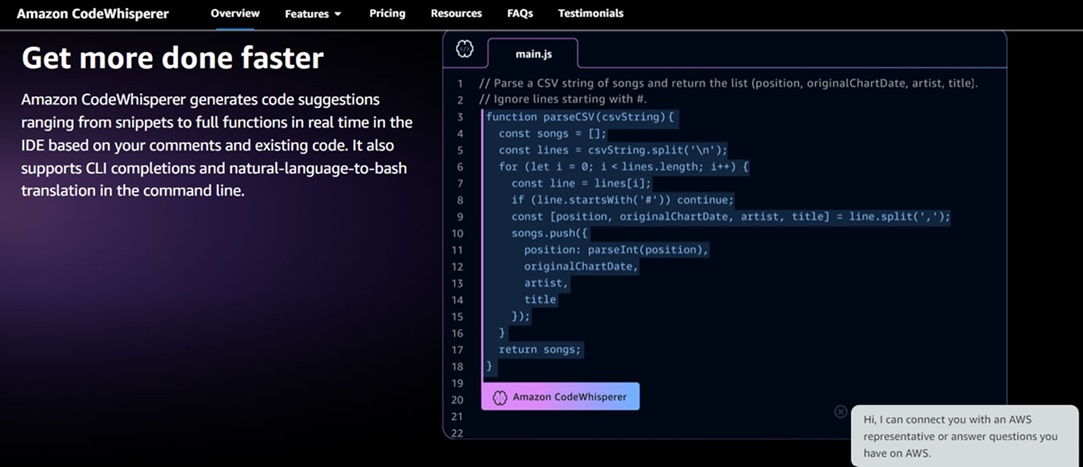What is Amazon CodeWhisperer?
CodeWhisperer is an AI service on AWS that provides code reviews and suggestions to improve code quality. Some key things to know:
- It analyzes source code to identify bugs, security issues, styling inconsistencies using machine learning techniques like natural language processing.
- Can integrate with common IDEs like VS Code and with code repositories hosted on AWS services to scan code bases.
- Generates text summaries explaining issues found in code and suggests fixes following best practices. Aims to explain reasoning like a human code reviewer would.
- Can recommend alternative simpler code patterns like using better named variables, avoiding complex nested logic, optimizing imports etc to improve readability, reuse and maintainability.
- Trained on a corpus over 1 billon lines of code and natural language interactions from over 10 thousand human experts to identify high impact improvements.
- Applicable across many languages like Python, JavaScript, Java, C++ with language tailored analysis and recommendations produced.
In summary, CodeWhisperer applies ML to automate aspects of code analysis and recommendation traditionally requiring human code review expertise in order to boost developer productivity and software quality/security. It aims to enhance not replace human judgement during modern codebase development.
Key steps to start using Amazon CodeWhisperer:
- Sign up for an AWS account if you don’t already have one. CodeWhisperer runs on Amazon cloud infrastructure.
- Enable access to Amazon CodeWhisperer in the AWS console under the ML services section. This may need approval for billing purposes.
- Install AWS CLI and configure it with user credentials to interact with services from your terminal/command line.
- Clone the CodeWhisperer GitHub repo to get starter code examples and notebooks for Python API usage.
- Upload your code repository to an S3 bucket that CodeWhisperer will have access to for analyzing source code as input data.
- Instantiate a CodeWhisperer endpoint and pass the S3 bucket details along with a compute configuration based on your usage needs and volume.
- Use the Python SDK or AWS CLI to invoke the analyzer on your code and output useful recommendations.
- Try CodeWhisperer demo UIs in Jupyter notebooks to see analysis visualization and easily apply suggestions to improve code quality.
Key things to note are proper IAM policies to authorize access, integrating s3 and VPC settings, and budgeting costs based on the compute power provisioned for CodeWhisperer. Leverage docs and community examples as much as possible!


